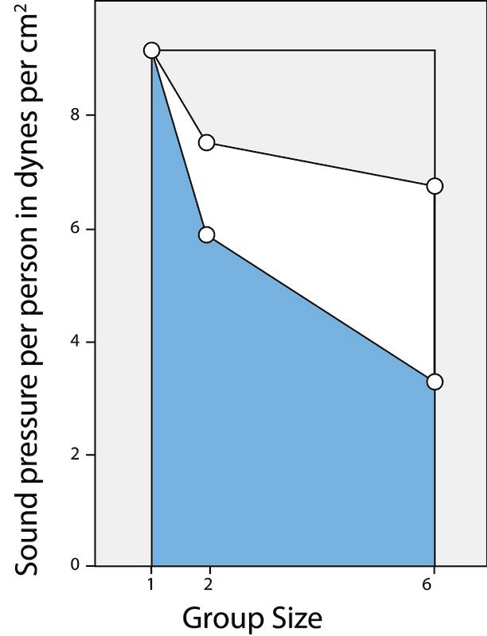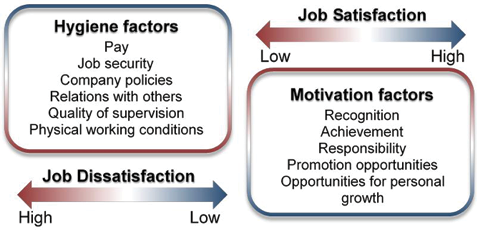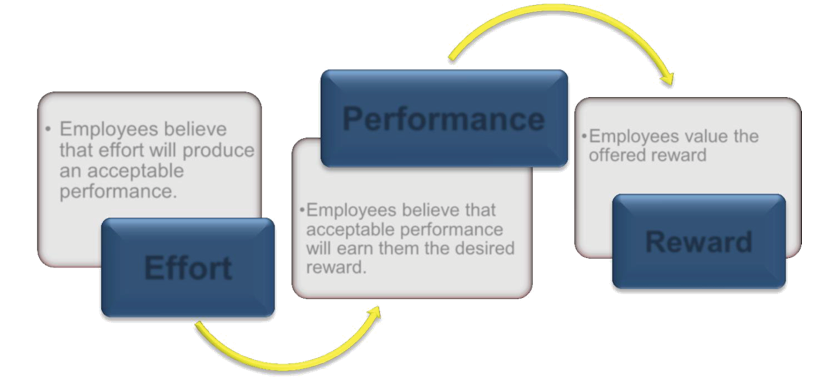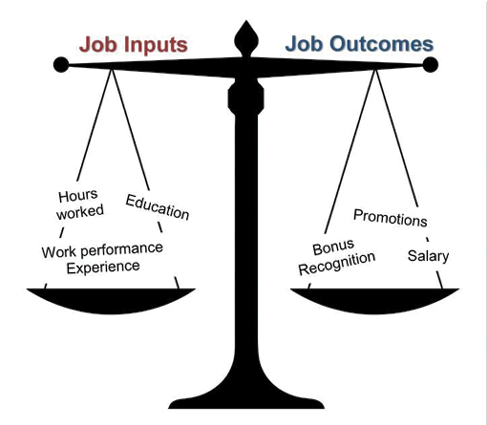7
Essential Questions
- Review the evidence that suggests humans have a fundamental need to belong to groups.
- Compare the sociometer model of self-esteem to a more traditional view of self-esteem.
- Use theories of social facilitation to predict when a group will perform tasks slowly or quickly (e.g., students eating a meal as a group, workers on an assembly line, or a study group).
- Summarize the methods used by Latané, Williams, and Harkins to identify the relative impact of social loafing and coordination problems on group performance.
- Describe how groups change over time.
- Apply the theory of groupthink to a well-known decision-making group, such as the group of advisors responsible for planning the Bay of Pigs operation.
- List and discuss the factors that facilitate and impede group performance and decision making.
- Develop a list of recommendations that, if followed, would minimize the possibility of groupthink developing in a group.
This module assumes that a thorough understanding of people requires a thorough understanding of groups. Each of us is an autonomous individual seeking our own objectives, yet we are also members of groups — groups that constrain us, guide us, and sustain us. Just as each of us influences the group and the people in the group, so, too, do groups change each one of us. Joining groups satisfies our need to belong, gain information and understanding through social comparison, define our sense of self and social identity, and achieve goals that might elude us if we worked alone. Groups are also practically significant, for much of the world’s work is done by groups rather than by individuals. Success sometimes eludes our groups, but when group members learn to work together as a cohesive team their success becomes more certain. People also turn to groups when important decisions must be made, and this choice is justified as long as groups avoid such problems as group polarization and groupthink.
The Psychology of Groups
Psychologists study groups because nearly all human activities — working, learning, worshiping, relaxing, playing, and even sleeping — occur in groups. The lone individual who is cut off from all groups is a rarity. Most of us live out our lives in groups, and these groups have a profound impact on our thoughts, feelings, and actions. Many psychologists focus their attention on single individuals, but social psychologists expand their analysis to include groups, organizations, communities, and even cultures.
This module examines the psychology of groups and group membership. It begins with a basic question: What is the psychological significance of groups? People are, undeniably, more often in groups rather than alone. What accounts for this marked gregariousness and what does it say about our psychological makeup? The module then reviews some of the key findings from studies of groups. Researchers have asked many questions about people and groups: Do people work as hard as they can when they are in groups? Are groups more cautious than individuals? Do groups make wiser decisions than single individuals? In many cases the answers are not what common sense and folk wisdom might suggest (Figure 1).

The Psychological Significance of Groups
Many people loudly proclaim their autonomy and independence. Like Ralph Waldo Emerson, they avow, “I must be myself. I will not hide my tastes or aversions… I will seek my own” (1903/2004, p. 127). Even though people are capable of living separate and apart from others, they join with others because groups meet their psychological and social needs.
The Need to Belong
Across individuals, societies, and even eras, humans consistently seek inclusion over exclusion, membership over isolation, and acceptance over rejection. As Roy Baumeister and Mark Leary conclude, humans have a need to belong: “a pervasive drive to form and maintain at least a minimum quantity of lasting, positive, and impactful interpersonal relationships” (1995, p. 497). And most of us satisfy this need by joining groups. When surveyed, 87.3% of Americans reported that they lived with other people, including family members, partners, and roommates (Davis & Smith, 2007). The majority, ranging from 50% to 80%, reported regularly doing things in groups, such as attending a sports event together, visiting one another for the evening, sharing a meal together, or going out as a group to see a movie (Putnam, 2000) (Figure 2).

People respond negatively when their need to belong is unfulfilled. For example, college students often feel homesick and lonely when they first start college, but not if they belong to a cohesive, socially satisfying group (Buote et al., 2007). People who are accepted members of a group tend to feel happier and more satisfied. But should they be rejected by a group, they feel unhappy, helpless, and depressed. Studies of ostracism — the deliberate exclusion from groups — indicate this experience is highly stressful and can lead to depression, confused thinking, and even aggression (Williams, 2007). When researchers used a functional magnetic resonance imaging scanner to track neural responses to exclusion, they found that people who were left out of a group activity displayed heightened cortical activity in two specific areas of the brain — the dorsal anterior cingulate cortex and the anterior insula. These areas of the brain are associated with the experience of physical pain sensations (Eisenberger, Lieberman, & Williams, 2003). It hurts, quite literally, to be left out of a group.
Affiliation in Groups
Groups not only satisfy the need to belong, they also provide members with information, assistance, and social support. Leon Festinger’s theory of social comparison (1950, 1954) suggested that in many cases people join with others to evaluate the accuracy of their personal beliefs and attitudes. Stanley Schachter (1959) explored this process by putting individuals in ambiguous, stressful situations and asking them if they wished to wait alone or with others. He found that people affiliate in such situations — they seek the company of others.
Although any kind of companionship is appreciated, we prefer those who provide us with reassurance and support as well as accurate information. In some cases, we also prefer to join with others who are even worse off than we are. Imagine, for example, how you would respond when the teacher hands back the test and yours is marked 85%. Do you want to affiliate with a friend who got a 95% or a friend who got a 78%? To maintain a sense of self-worth, people seek out and compare themselves to the less fortunate. This process is known as downward social comparison.
Identity and Membership
Groups are not only founts of information during times of ambiguity, they also help us answer the existentially significant question, “Who am I?” Common sense tells us that our sense of self is our private definition of who we are, a kind of archival record of our experiences, qualities, and capabilities. Yet, the self also includes all those qualities that spring from memberships in groups. People are defined not only by their traits, preferences, interests, likes, and dislikes, but also by their friendships, social roles, family connections, and group memberships. The self is not just a “me,” but also a “we.”
Even demographic qualities such as sex or age can influence us if we categorize ourselves based on these qualities. Social identity theory, for example, assumes that we don’t just classify other people into such social categories as man, woman, Anglo, elderly, or college student, but we also categorize ourselves. Moreover, if we strongly identify with these categories, then we will ascribe the characteristics of the typical member of these groups to ourselves, and so stereotype ourselves. If, for example, we believe that college students are intellectual, then we will assume we, too, are intellectual if we identify with that group (Hogg, 2001).
Groups also provide a variety of means for maintaining and enhancing a sense of self-worth, as our assessment of the quality of groups we belong to influences our collective self-esteem(Crocker & Luhtanen, 1990). If our self-esteem is shaken by a personal setback, we can focus on our group’s success and prestige. In addition, by comparing our group to other groups, we frequently discover that we are members of the better group, and so can take pride in our superiority. By denigrating other groups, we elevate both our personal and our collective self-esteem (Crocker & Major, 1989).
Mark Leary’s sociometer model goes so far as to suggest that “self-esteem is part of a sociometer that monitors peoples’ relational value in other people’s eyes” (2007, p. 328). He maintains self-esteem is not just an index of one’s sense of personal value, but also an indicator of acceptance into groups. Like a gauge that indicates how much fuel is left in the tank, a dip in self-esteem indicates exclusion from our group is likely. Disquieting feelings of self-worth, then, prompt us to search for and correct characteristics and qualities that put us at risk of social exclusion. Self-esteem is not just high self-regard, but the self-approbation that we feel when included in groups (Leary & Baumeister, 2000).
Evolutionary Advantages of Group Living
Groups may be humans’ most useful invention, for they provide us with the means to reach goals that would elude us if we remained alone. Individuals in groups can secure advantages and avoid disadvantages that would plague the lone individuals. In his theory of social integration, Moreland concludes that groups tend to form whenever “people become dependent on one another for the satisfaction of their needs” (1987, p. 104). The advantages of group life may be so great that humans are biologically prepared to seek membership and avoid isolation. From an evolutionary psychology perspective, because groups have increased humans’ overall fitness for countless generations, individuals who carried genes that promoted solitude-seeking were less likely to survive and procreate compared to those with genes that prompted them to join groups (Darwin, 1859/1963). This process of natural selection culminated in the creation of a modern human who seeks out membership in groups instinctively, for most of us are descendants of “joiners” rather than “loners.”
Motivation and Performance
Groups usually exist for a reason. In groups, we solve problems, create products, create standards, communicate knowledge, have fun, perform arts, create institutions, and even ensure our safety from attacks by other groups. But do groups always outperform individuals?
Social Facilitation in Groups
Do people perform more effectively when alone or when part of a group? Norman Triplett (1898) examined this issue in one of the first empirical studies in psychology. While watching bicycle races, Triplett noticed that cyclists were faster when they competed against other racers than when they raced alone against the clock. To determine if the presence of others leads to the psychological stimulation that enhances performance, he arranged for 40 children to play a game that involved turning a small reel as quickly as possible (see Figure 1). When he measured how quickly they turned the reel, he confirmed that children performed slightly better when they played the game in pairs compared to when they played alone (see Stroebe, 2012; Strube, 2005).
Triplett succeeded in sparking interest in a phenomenon now known as social facilitation: the enhancement of an individual’s performance when that person works in the presence of other people. However, it remained for Robert Zajonc (1965) to specify when social facilitation does and does not occur. After reviewing prior research, Zajonc noted that the facilitating effects of an audience usually only occur when the task requires the person to perform dominant responses, i.e., ones that are well-learned or based on instinctive behaviors. If the task requires nondominant responses, i.e., novel, complicated, or untried behaviors that the organism has never performed before or has performed only infrequently, then the presence of others inhibits performance. Hence, students write poorer quality essays on complex philosophical questions when they labor in a group rather than alone (Allport, 1924), but they make fewer mistakes in solving simple, low-level multiplication problems with an audience or a coactor than when they work in isolation (Dashiell, 1930) (Figure 3).

Social facilitation, then, depends on the task: other people facilitate performance when the task is so simple that it requires only dominant responses, but others interfere when the task requires nondominant responses. However, a number of psychological processes combine to influence when social facilitation, not social interference, occurs. Studies of the challenge-threat response and brain imaging, for example, confirm that we respond physiologically and neurologically to the presence of others (Blascovich, Mendes, Hunter, & Salomon, 1999). Other people also can trigger evaluation apprehension, particularly when we feel that our individual performance will be known to others, and those others might judge it negatively (Bond, Atoum, & VanLeeuwen, 1996). The presence of other people can also cause perturbations in our capacity to concentrate on and process information (Harkins, 2006). Distractions due to the presence of other people have been shown to improve performance on certain tasks, such as the Stroop task, but undermine performance on more cognitively demanding tasks(Huguet, Galvaing, Monteil, & Dumas, 1999).
Social Loafing
Groups usually outperform individuals. A single student, working alone on a paper, will get less done in an hour than will four students working on a group project. One person playing a tug-of-war game against a group will lose. A crew of movers can pack up and transport your household belongings faster than you can by yourself. As the saying goes, “Many hands make light the work” (Littlepage, 1991; Steiner, 1972).
Groups, though, tend to be underachievers. Studies of social facilitation confirmed the positive motivational benefits of working with other people on well-practiced tasks in which each member’s contribution to the collective enterprise can be identified and evaluated. But what happens when tasks require a truly collective effort? First, when people work together they must coordinate their individual activities and contributions to reach the maximum level of efficiency — but they rarely do (Diehl & Stroebe, 1987). Three people in a tug-of-war competition, for example, invariably pull and pause at slightly different times, so their efforts are uncoordinated. The result is coordination loss: the three-person group is stronger than a single person, but not three times as strong. Second, people just don’t exert as much effort when working on a collective endeavor, nor do they expend as much cognitive effort trying to solve problems, as they do when working alone. They display social loafing (Latané, 1981) (Figure 4).

Bibb Latané, Kip Williams, and Stephen Harkins (1979) examined both coordination losses and social loafing by arranging for students to cheer or clap either alone or in groups of varying sizes. The students cheered alone or in 2- or 6-person groups, or they were lead to believe they were in 2- or 6-person groups (those in the “pseudo-groups” wore blindfolds and headsets that played masking sound). As Figure 2 indicates, groups generated more noise than solitary subjects, but the productivity dropped as the groups became larger in size. In dyads, each subject worked at only 66% of capacity, and in 6-person groups at 36%. Productivity also dropped when subjects merely believed they were in groups. If subjects thought that one other person was shouting with them, they shouted 82% as intensely, and if they thought five other people were shouting, they reached only 74% of their capacity. These loses in productivity were not due to coordination problems; this decline in production could be attributed only to a reduction in effort — to social loafing (Latané et al., 1979, Experiment 2).
Motivation Theories
Motivation refers to an internally generated drive to achieve a goal or follow a particular course of action. Highly motivated employees focus their efforts on achieving specific goals. It’s the manager’s job, therefore, to motivate employees — to get them to try to do the best job they can. Motivated employees call in sick less frequently, are more productive, and are less likely to convey bad attitudes to customers and co-workers. They also tend to stay in their jobs longer, reducing turnover and the cost of hiring and training employees. But what motivates employees to do well? How does a manager encourage employees to show up for work each day and do a good job? Paying them helps, but many other factors influence a person’s desire (or lack of it) to excel in the workplace. What are these factors, are they the same for everybody, and do they change over time? To address these questions, we’ll examine four of the most influential theories of motivation: hierarchy-of-needs theory, two-factor theory, expectancy theory, and equity theory.
Extrinsic and Intrinsic Motivation
Before we begin our discussion of the various theories of motivation, it is important to establish the distinction between intrinsic and extrinsic motivation. Simply put, intrinsic motivation comes from within: the enjoyment of a task, the satisfaction of a job well done, and the desire to achieve are all sources of intrinsic motivation. On the other hand, extrinsic motivation comes about because of external factors such as a bonus or another form of reward. Avoiding punishment or a bad outcome can also be a source of extrinsic motivation; fear, it is said, can be a great motivator.
Hierarchy of Needs Theory
Psychologist Abraham Maslow’s hierarchy of needs theory proposed that we are motivated by the five initially unmet needs, arranged in the hierarchical order shown in the figure below, which also lists specific examples of each type of need in both the personal and work spheres of life. Look, for instance, at the list of personal needs in the middle column. At the bottom are physiological needs (such life-sustaining needs as food and shelter). Working up the hierarchy we experience safety needs (financial stability, freedom from physical harm), social needs (the need to belong and have friends), esteem needs (the need for self-respect and status), and self-actualization needs (the need to reach one’s full potential or achieve some creative success). There are two key things to remember about Maslow’s model (Figure 5):
- We must satisfy lower-level needs before we seek to satisfy higher-level needs.
- Once we’ve satisfied a need, it no longer motivates us; the next higher need takes its place.
Let’s say, for example, that for a variety of reasons that aren’t your fault, you’re broke, hungry, and homeless. Because you’ll probably take almost any job that will pay for food and housing (physiological needs), you go to work repossessing cars. Fortunately, your student loan finally comes through, and with enough money to feed yourself, you can go back to school and look for a job that’s not so risky (a safety need). You find a job as a night janitor in the library, and though you feel secure, you start to feel cut off from your friends, who are active during daylight hours. You want to work among people, not books (a social need). So now you join several of your friends selling pizza in the student center. This job improves your social life, but even though you’re very good at making pizzas, it’s not terribly satisfying. You’d like something that your friends will respect enough to stop teasing you about the pizza job (an esteem need). So you study hard and land a job as an intern in the governor’s office. On graduation, you move up through a series of government appointments and eventually run for state senator. As you’re sworn into office, you realize that you’ve reached your full potential (a self-actualization need) and you comment to yourself, “It doesn’t get any better than this.”
|
Maslow’s Hierarchy of Needs |
Personal Fulfillment |
Professional Fulfillment |
|
Highest: Self-Actualization |
Creative success and achievement |
Challenging work, leadership, professional achievement |
|
Esteem |
Status and respect |
Authority, titles, recognition |
|
Social |
Family and friendships |
Team membership and social activities |
|
Safety |
Financial stability |
Job security |
|
Physiological |
Food and shelter |
Salary |
Figure 5: Maslow’s Hierarchy of Needs with Examples.
Needs Theory and the Workplace
What implications does Maslow’s theory have for business managers? There are two key points: (1) Not all employees are driven by the same needs, and (2) the needs that motivate individuals can change over time. Managers should consider which needs different employees are trying to satisfy and should structure rewards and other forms of recognition accordingly. For example, when you got your first job repossessing cars, you were motivated by the need for money to buy food. If you’d been given a choice between a raise or a plaque recognizing your accomplishments, you’d undoubtedly have opted for the money. As a state senator, by contrast, you may prefer public recognition of work well done (say, election to higher office) to a pay raise.
Two-Factor Theory
Another psychologist, Frederick Herzberg, set out to determine which work factors (such as wages, job security, or advancement) made people feel good about their jobs and which factors made them feel bad about their jobs. He surveyed workers, analyzed the results, and concluded that to understand employee satisfaction (or dissatisfaction), he had to divide work factors into two categories (Figure 6):
- Motivation factors. Those factors that are strong contributors to job satisfaction
- Hygiene factors. Those factors that are not strong contributors to satisfaction but that must be present to meet a worker’s expectations and prevent job dissatisfaction

Two-Factor Theory and the Workplace
We’ll ask the same question about Herzberg’s model as we did about Maslow’s: What does it mean for managers? Suppose you’re a senior manager in an accounting firm, where you supervise a team of accountants, each of whom has been with the firm for five years. How would you use Herzberg’s model to motivate the employees who report to you? Let’s start with hygiene factors. Are salaries reasonable? What about working conditions? Does each accountant have his or her own workspace, or are they crammed into tiny workrooms? Are they being properly supervised or are they left on their own to sink or swim? If hygiene factors like these don’t meet employees’ expectations, they may be dissatisfied with their jobs.
Fixing problems related to hygiene factors may alleviate job dissatisfaction, but it won’t necessarily improve anyone’s job satisfaction. To increase satisfaction (and motivate someone to perform better), you must address motivation factors. Is the work itself challenging and stimulating? Do employees receive recognition for jobs well done? Will the work that an accountant has been assigned help him or her to advance in the firm? According to Herzberg, motivation requires a twofold approach: eliminating “dissatisfiers” and enhancing satisfiers.
Expectancy Theory
If you were a manager, wouldn’t you like to know how your employees decide whether to work hard or goof off? Wouldn’t it be nice to know whether a planned rewards program will have the desired effect — namely, motivating them to perform better in their jobs? These are the issues considered by psychologist Victor Vroom in his expectancy theory (Figure 7), which proposes that employees will work hard to earn rewards that they value and that they consider “attainable”.

Expectancy Theory and the Workplace
To apply expectancy theory to a real-world situation, let’s analyze an automobile-insurance company with one hundred agents who work from a call center. Assume that the firm pays a base salary of $2,000 a month, plus a $200 commission on each policy sold above ten policies a month. In terms of expectancy theory, under what conditions would an agent be motivated to sell more than ten policies a month?
- The agent would have to believe that his or her efforts would result in policy sales (that, in other words, there’s a positive link between effort and performance).
- The agent would have to be confident that if he or she sold more than ten policies in a given month, there would indeed be a bonus (a positive link between performance and reward).
- The bonus per policy — $200 — would have to be of value to the agent.
Now let’s alter the scenario slightly. Say that the company raises prices, thus making it harder to sell the policies. How will agents’ motivation be affected? According to expectancy theory, motivation will suffer. Why? Because agents may be less confident that their efforts will lead to satisfactory performance. What if the company introduces a policy whereby agents get bonuses only if buyers don’t cancel policies within ninety days? Now agents may be less confident that they’ll get bonuses even if they do sell more than ten policies. Motivation will decrease because the link between performance and reward has been weakened. Finally, what will happen if bonuses are cut from $200 to $25? Obviously, the reward would be of less value to agents, and, again, motivation will suffer. The message of expectancy theory, then, is fairly clear: managers should offer rewards that employees value, set performance levels that they can reach, and ensure a strong link between performance and reward.
Equity Theory
What if you spent thirty hours working on a class report, did everything you were supposed to do, and handed in an excellent assignment (in your opinion). Your roommate, on the other hand, spent about five hours and put everything together at the last minute. You know, moreover, that he ignored half the requirements and never even ran his assignment through a spell-checker. A week later, your teacher returns the reports. You get a C and your roommate gets a B+. In all likelihood, you’ll feel that you’ve been treated unfairly relative to your roommate.
Your reaction makes sense according to the equity theory of motivation, which focuses on our perceptions of how fairly we’re treated relative to others. Applied to the work environment, this theory proposes that employees analyze their contributions or job inputs (hours worked, education, experience, work performance) and their rewards or job outcomes (salary, bonus, promotion, recognition). Then they create a contributions/rewards ratio and compare it to those of other people. The basis of comparison can be any one of the following:
- Someone in a similar position
- Someone holding a different position in the same organization
- Someone with a similar occupation
- Someone who shares certain characteristics (such as age, education, or level of experience)
- Oneself at another point in time
When individuals perceive that the ratio of their contributions to rewards is comparable to that of others, they perceive that they’re being treated fairly or equitably; when they perceive that the ratio is out of balance, they perceive inequity. Occasionally, people will perceive that they’re being treated better than others. More often, however, they conclude that others are being treated better (and that they themselves are being treated worse). This is what you concluded when you saw your grade in the previous example. You’ve calculated your ratio of contributions (hours worked, research and writing skills) to rewards (project grade), compared it to your roommate’s ratio, and concluded that the two ratios are out of balance.
What will an employee do if he or she perceives an inequity? The individual might try to bring the ratio into balance, either by decreasing inputs (working fewer hours, not taking on additional tasks) or by increasing outputs (asking for a raise). If this strategy fails, an employee might complain to a supervisor, transfer to another job, leave the organization, or rationalize the situation (e.g., deciding that the situation isn’t so bad after all). Equity theory advises managers to focus on treating workers fairly, especially in determining compensation, which is, naturally, a common basis of comparison.

